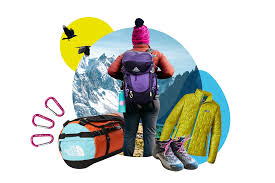What material do you recommend your daily TMB hiking to wash your clothes?
I notice new workout clothes have a smell just minutes after I put them on (usually a polyester and elasthane blend, or stuff with spandex), whereas older workout clothes still smell great even the next day. I’m looking into natural materials like cotton and hemp, but they aren’t as quick drying as polyester, and I hoped to hike the TMB in shorts and shirts that can be washed and dried each night. What materials are your favorite to hike in for multi-day wear?
In prepping for the Tour du Mont Blanc (TMB) I did a lot of research. I was a virgin to Alpine hiking and I wanted to really enjoy my time on the trail so I wanted to be prepared.
By and large the information that’s out there on trekking the TMB is extensive and reliable. But here are some things that I’d wish I’d known about before setting out.

Here’s the most important one
The TMB (Tour du Mont Blanc) hike is a popular long-distance trek around Mont Blanc, spanning approximately 170 kilometers (106 miles) through France, Italy, and Switzerland. Hikers experience stunning alpine scenery, diverse landscapes, and charming mountain villages.
To wash your clothes while hiking the TMB:
- Choose a Location: Find a nearby stream, lake, or designated washing area.
- Use Biodegradable Soap: Bring a small amount of biodegradable soap to minimize environmental impact.
- Fill a Container: Use a collapsible sink, basin, or simply a clean, flat rock.
- Wash Gently: Soak your clothes, then scrub lightly to remove dirt.
- Rinse Thoroughly: Rinse the soap out with clean water until the water runs clear.
- Dry Properly: Wring out excess water and hang clothes on a line or over bushes in a shaded area to dry quickly.
Certainly! The TMB (Tour du Mont Blanc) is a popular trekking route around the Mont Blanc massif, and while it’s primarily a hiking trail, there are some points where you might consider washing your clothes. Here are some key points regarding washing clothes while hiking the TMB:
1. Laundromats
- Definition: Facilities equipped with washing machines and dryers.
- Use: Some towns along the TMB (like Chamonix or Courmayeur) have laundromats where you can wash and dry your clothes. This is the most efficient way to clean larger items.
2. Hand Washing
- Definition: The process of washing clothes by hand using water and detergent.
- Use: If you prefer a more adventurous approach, you can wash small items in a sink or at a water source. Just use biodegradable soap to minimize environmental impact.
3. Quick-Dry Fabrics
- Definition: Clothing made from synthetic materials that dry quickly when wet.
- Use: Investing in quick-dry clothing can help manage laundry while hiking, as these items can be rinsed out and will dry overnight.
4. Washing in Streams/Rivers
- Definition: Using natural water bodies to clean clothing.
- Use: If you find a clean, fast-flowing stream, you can wash clothes there. Ensure you’re using eco-friendly soap and avoid contaminating water sources.
5. Drying Techniques
- Definition: Methods used to remove moisture from washed clothing.
- Use: After washing, wring out excess water and hang items on your pack or nearby trees to dry while you hike.
6. Packing Light
- Definition: The practice of carrying only essential items to reduce weight.
- Use: By packing fewer clothes, you may not need to wash them as often. Choose versatile pieces that can be worn multiple times.
7. Pre-Trip Preparation
- Definition: Planning and organizing gear and clothing before embarking on a hike.
- Use: Consider which clothes to take based on how easily they can be cleaned and dried. This can save time and effort on the trail.
8. Trail Etiquette
- Definition: Guidelines for respectful behavior while on the trail.
- Use: Always be mindful of where you wash your clothes. Avoid doing so directly in natural water sources to protect local ecosystems.
9. Washing Supplies
- Definition: The materials needed to wash clothes, such as soap and a wash bag.
- Use: Carry a small amount of biodegradable soap and a compact wash bag for hand washing on the go.
10. Timing
- Definition: Choosing the right moment to wash clothes during the hike.
Use: Plan laundry days around your itinerary. Schedule washing when you have a rest day or a longer 

